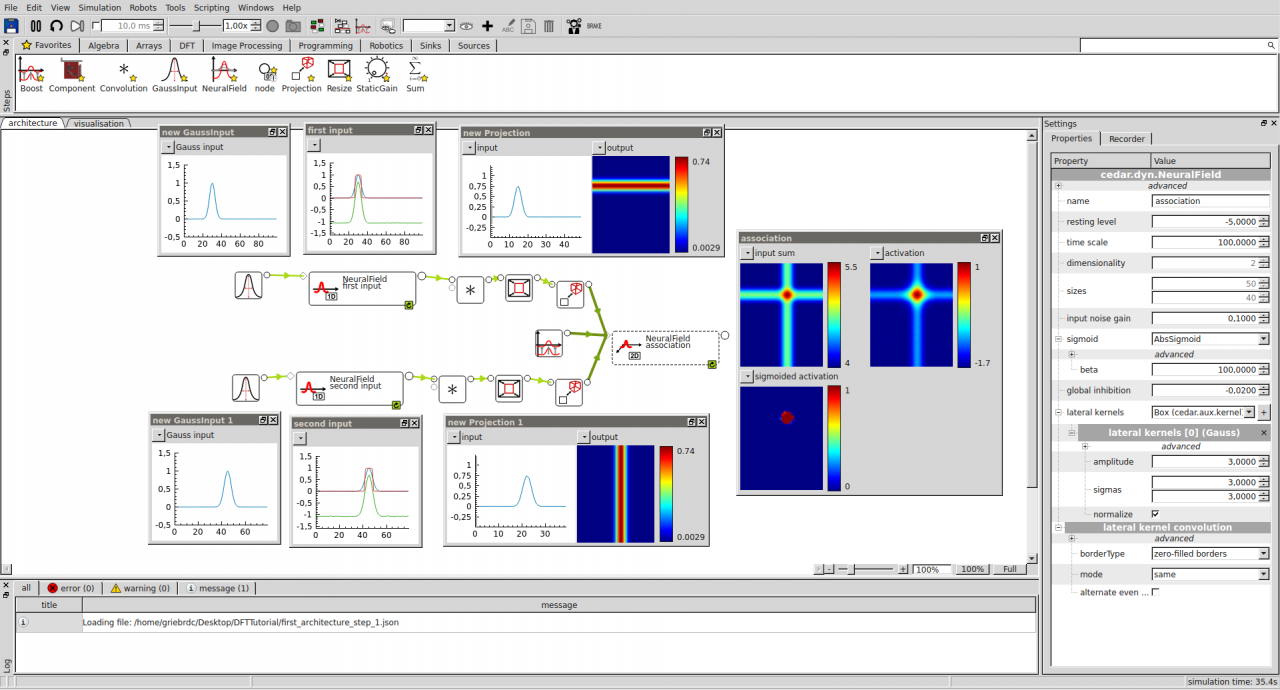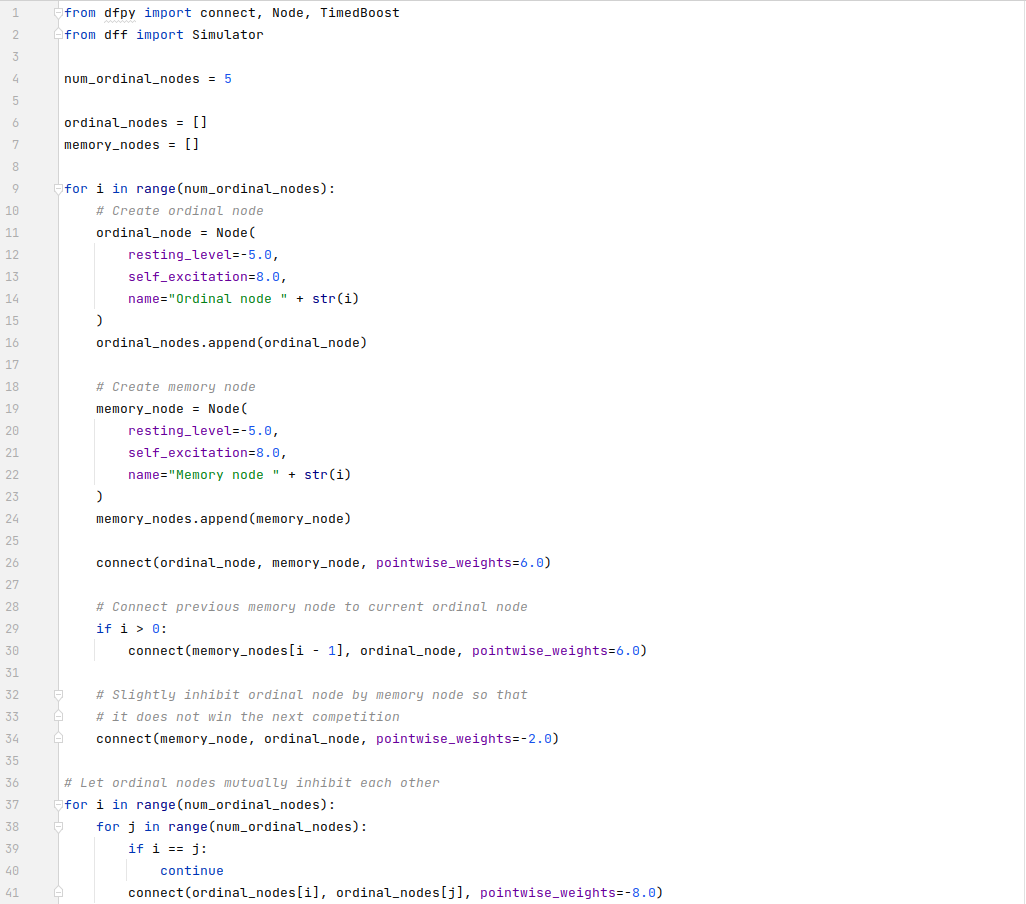Software
Scientific work with neural process models requires powerful and flexible software frameworks that support creating (large scale) models, setting parameters on-the-fly, and observing how processes in models develop.
Over the years, we have developed two extensive software frameworks for dynamic field theory, cosivina and cedar. Both frameworks are in active use by several research groups across the world and are actively maintained to add new features and fix bugs. These are the tools that we use for our everyday work and we are proud to share them with you. Please do not hesitate to approach us with any questions or problems you may have with the software.
CEDAR
cedar is a library written in C++ and has become our main tool for simulating large-scale dynamic neural field architectures that are connected to robots and other hardware devices. It bundles our knowledge and ideology of autonomous robotics with an emphasis on cognition, embodiment, and dynamics. The library comes with a powerful graphical interface, enabling the user to build architectures by drag-and-drop.
cedar is also regularly used by students (Bachelor or Master level) for projects or their thesis work. Once the underlying scientific concepts are understood, using the graphical user interface enables them to become productive very quickly.
COSIVINA
Cosivina is a free object-oriented framework to construct dynamic field architectures in Matlab, simulate the evolution of activation in these architectures, and create graphical user interfaces to view the activation time course and adjust model parameters online.
Cosivina includes a number of example architectures that are also available in compiled form for those who do not have Matlab available. These examples form the basis for most exercises in the book 'Dynamic thinking - A primer on dynamic field theory'.
COSIVINA PYTHON
Cosivina is a free object-oriented framework to construct dynamic field architectures and simulate the evolution of activation in these architectures. Cosivina was originally written for Matlab. This Python implementation offers the core functionality of the Matlab version, but currently lacks graphical user interfaces, contains only a subset of architecture elements and does not support dynamic fields with more than two dimensions.
Dynamic Field Flow
DynamicFieldFlow is a library that allows to simulate DynamicFieldTheory architectures by means of the TensorFlow framework. This enables highly efficient simulation on the GPU or CPU. It also enables learning the parameters of the architecture such as to optimize some loss function.



